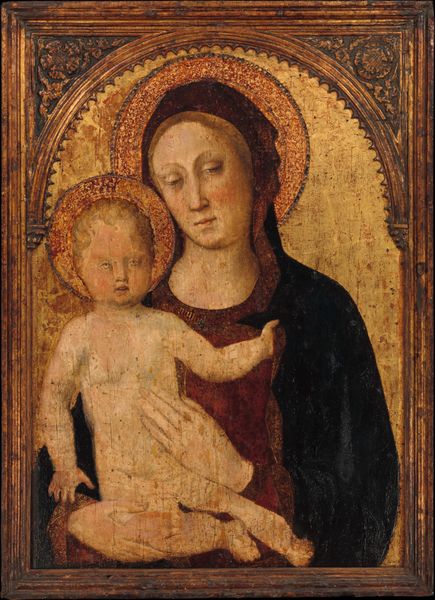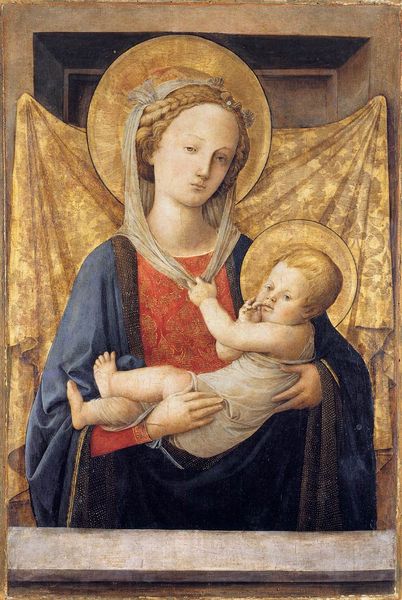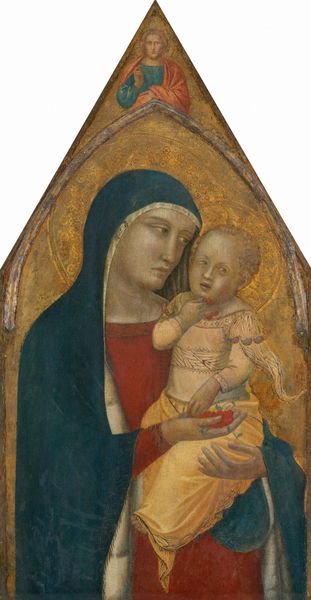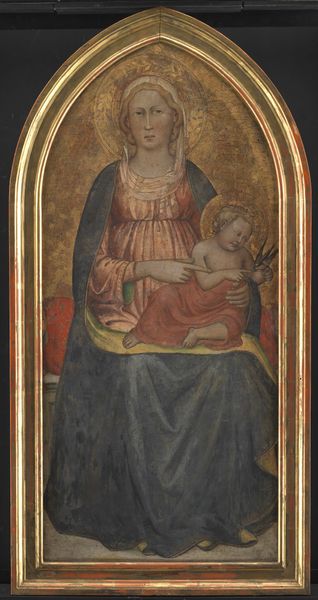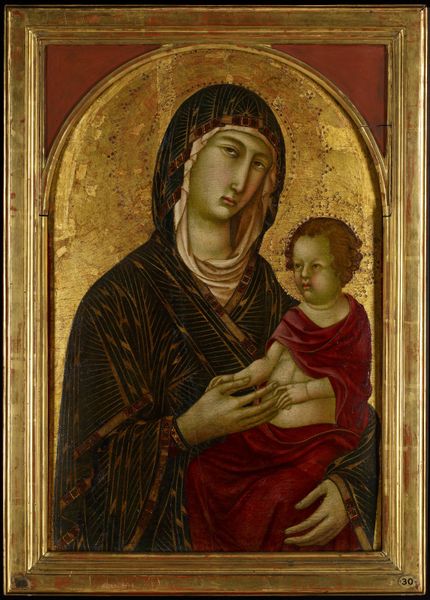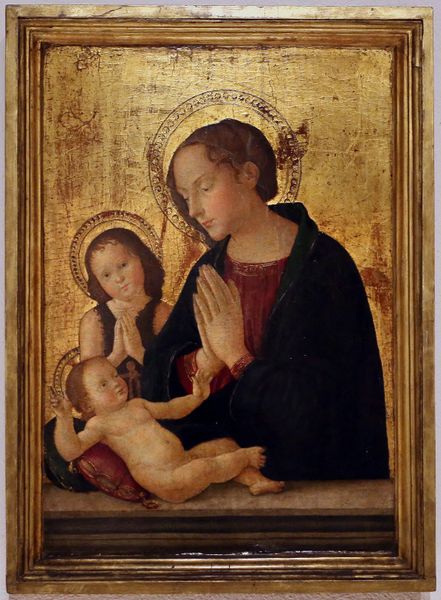
oil-paint
#
portrait
#
oil-paint
#
figuration
#
oil painting
#
child
#
christianity
#
italian-renaissance
#
early-renaissance
#
virgin-mary
#
christ
Dimensions: 55 x 82 cm
Copyright: Public domain
Curator: Jacopo Bellini’s “Virgin with Child,” executed in oil around 1455, graces the walls of the Galleria dell'Accademia here in Venice. Editor: My initial impression? Restrained. A palette of muted browns and reds dominates, lending a sense of solemnity. Note especially the subtle modelling in Mary’s face; she’s beautiful but not idealized, very grounded in human experience. Curator: That restraint is quite characteristic of the early Renaissance. Bellini was operating in a cultural milieu where overt emotionalism was tempered by humanist ideals and a renewed interest in classical forms, and this piece reflects a broader devotion and idealization of motherhood pervasive at the time. Editor: Observe how the composition directs our gaze. The Virgin's downward glance converges with the Child's gesture, drawing us into their shared space. And then we notice the massed faces of the angelic host in the shadows beyond. They become structural elements, rather than simply figures of devotion. The gold leaf contributes too, a halo which sets them apart and places them into the divine world. Curator: That gold, coupled with the iconographic conventions—the halos, the Virgin's clothing, and the symbolic offering held by the child—certainly positions it within the broader visual language of Christianity. Early viewers, familiar with these symbols, would have immediately understood the deeper meanings embedded in the artwork and would read that body language very carefully. The book sitting to the left is also a great hint! Editor: Indeed. Yet, Bellini transcends mere repetition. The rendering of the fabric, the weight of the figures, these details give the painting a tangibility. It’s an impressive blend of spiritual symbolism and burgeoning naturalism. He really tries to incorporate them, as shown by Mary's anatomy which follows the golden ratio, typical of Renaissance artists. Curator: The painting clearly speaks volumes about artistic innovation and societal expectations. Its meticulous construction underscores the religious narratives it’s attempting to share with a wider audience. Bellini has truly struck a balance between veneration and artistic representation, don't you think? Editor: Absolutely. Examining this work today offers an intimate encounter with faith and aesthetic sensibility, bridging past devotion and enduring artistry, inviting an intimate reading which connects humanity with art itself.
Comments
No comments
Be the first to comment and join the conversation on the ultimate creative platform.
